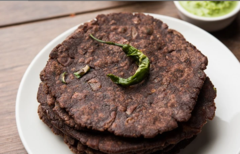Millets are imbued with nutritional benefits which have led to these grains being posited as a one-stop solution to resolve the crisis of malnourishment and food security issues. In our millet white paper project – part II, we covered how millets are climate-smart and all the superpower they posses.
Raising Awareness:
Promoting and mainstreaming millets necessitates a multi-pronged approach. Awareness remains one of the most important factors in this revival. Lack of information leads to numerous questions among consumers, sometimes as elementary as what does each millet look like, whether they can be consumed through the year and how they are meant to be eaten. The queries tend to increase in regions where millets are not part of the staple diet or their consumption has been minimized over the years.
Strategies to disseminate information about the many types of millets apart from the commonly known jowar and bajra, means of processing, storing and incorporating them in meals and their nutritional benefits for specific deficiencies and ailments can play a major role. As consumers are motivated to choose these grains, the increased demand will impact production positively.
Steps to increase awareness:
Millets may be hailed as Noble Grains, but their status in the hierarchy of foods is low. Being perceived as food for the poor, these grains have almost disappeared from mainstream dietary habits. Attempts at spreading awareness must also include an effort at elevating the social status of millets and highlighting their role in ensuring a healthy diet. Subsidizing these grains through the Public Distribution System (PDS) and their inclusion in programs like the Mid-day Meal (MDM) scheme can also enable their proliferation.
It is also imperative to extend efforts at awareness among farmers, familiarising them with the beneficial impact of cultivating millets on their incomes as well as on their lands. As farmers strive for livelihood in the midst of climate change and water scarcity, the possibility of cultivating grains suited for arid ecologies can pave the way forward for a greater rate of acceptance and adoption in the agricultural community.
Awareness goes hand-in-hand with research and development. Encouraging studies to enable primary processing of millet, storage, and shelf life enhancement, developing equipment and technological resources, and standardized grading promise to simplify and improve the production process for farmers and contribute to the growth of the millet market.
Building a strong business model is also imperative, with emphasis on value addition and development of value-added products from millets. Contemporary eating habits, particularly in urban areas, are greatly influenced by food trends, the increasing popularity of restaurants and food startups that have led to a culture of ‘eating out’ and ‘takeaways’, and an abundance of packaged food products.

Culinary Innovation:
It is crucial to develop strategies for positioning millets as viable food grains in this new-age culinary culture. With increasing concerns towards healthy eating and sustainably procured food, the time is right for marketing millets as an alternative ingredient in packaged foods and new recipes.
Using tools such as the Internet and social media and engaging influential chefs, bloggers, product manufacturers and other players in the food business to experiment with millets and familiarise their consumers can also play an important role in making these grains popular. Communication remains a major constraint in the marketing of millets—farmers are unable to find a market for their produce while consumers and professionals engaged in the food business are challenged for information as well as the right sources for a steady supply of quality millets. Developing marketing models for farmers to interact directly with consumers and encouraging collaborations to incorporate millets in products, recipes, and culinary innovations will make it possible to make them ready for today’s markets.
The goal of this project is not to position millets as a replacement for other grains. Rather, its purpose is to facilitate the reintegration of these grains in tandem with other ingredients for a balanced diet. In the quest for sustainable food sources, effective information and strategies can empower farmers and industry stakeholders to realize the moniker that is popularly attributed to millets in news reports—smart foods of the future and farming
Food of the Future: Millets as Key Ingredients for Food Security
Today, information on the health benefits of millets abound, targeted towards consumers especially in urban areas. But there is more to why these cereals are considered as food of the future. Millets aren’t beneficial only for our health, but also for the planet and agricultural communities, offering sustainable solutions to water scarcity and extreme weather conditions resulting from climate change.
The effects of climate change are deeper and more widespread than one might generally imagine. As rainfall dwindles and/or becomes erratic, agricultural productivity is altered and reduced. Low yield leads to drastic losses in gross national profits, food shortage and severely affects the socio-economic lives of agrarian communities, none more than smallholder farms. A study backed by the World Bank Group states, “Drought can have health impacts, hamper firm productivity, accelerate the destruction of forests, and compromise agricultural systems.”
The threat to food security induced by climate change is one of the greatest concerns in a world with a rising human population and dwindling natural resources. In looking for new-age strategies to control climate change and maintain adequate food production, the attention of governments, policymakers and research bodies are turning towards ancient food grains like millets in order to secure the future. The familiar proverb “old is gold” may well describe these grains that have survived and sustained communities in the face of changing weather conditions across millennia.
Stay tuned for part 4 from the series. We will walk you through key points focusing on how and why millets are the way forward for countries like India where food security and nutrient security are a major challenge.

